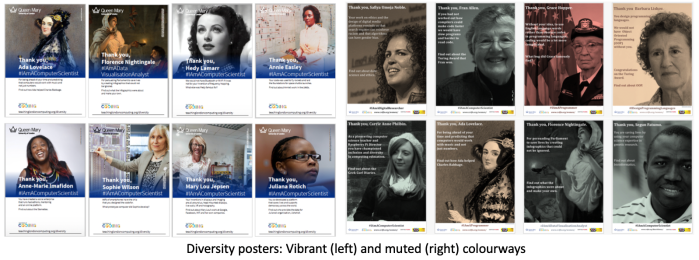by Jo Brodie and Paul Curzon, Queen Mary University of London
As a baby, born in the US in 1989, Freddie Figgers was abandoned by his biological parents but he was brought up with love and kindness by two much older adoptive parents who kindled his early enthusiasm for fixing things and inspired his work in smart health. He now runs the first Black-owned telecommunications company in the US.
When Freddie was 9 his father bought him an old (broken) computer from a charity shop to play around with. He’d previously enjoyed tinkering with his father’s collection of radios and alarm clocks and when he opened up the computer could see which of its components and soldering links were broken. He spotted that he could replace these with the same kinds of components from one of his dad’s old radios and, after several attempts, soon his computer was working again – Freddie was hooked, and he started to learn how to code.
When he was 12 he attended an after-school club and set to work fixing the school’s broken computers. His skill impressed the club’s leader, who also happened to be the local Mayor, and soon Freddie was being paid several dollars an hour to repair even more computers for the Mayor’s office (in the city of Quincy, Florida) and her staff. A few years later Quincy needed a new system to ensure that everyone’s water pressure was correct. A company offered to create software to monitor the water pressure gauges and said it would cost 600,000 dollars. Freddie, now 15 and still working with the Mayor, offered to create a low-cost program of his own and he saved the city thousands in doing so.
He was soon offered other contracts and used the money coming in to set up his own computing business. He heard about an insurance company in another US city whose offices had been badly damaged by a tornado and lost all of their customers’ records. That gave him the idea to set up a cloud computing service (which means that the data are stored in different places and if one is damaged the data can easily be recovered from the others).
His father, now quite elderly, had dementia and regularly wandered off and got lost. Freddie found an ingenious way to help him by rigging up one of his dad’s shoes with a GPS detector and two-way communication connected to his computer – he could talk to his dad through the shoe! If his dad was missing Freddie could talk to him, find out where he was and go and get him. Freddie later sold his shoe tracker for over 2 million dollars.
Living in a rural area he knew that mobile phone coverage and access to the internet was not as good as in larger cities. Big telecommunications companies are not keen to invest their money and equipment in areas with much smaller populations so instead Freddie decided to set up his own. It took him quite a few applications to the FCC (the US’ Federal Communications Commission who regulate internet and phone providers) but eventually, at 21, he was both the youngest and the first Black person in the US to own a telecoms company.
Most telecoms companies just provide a network service but his company also creates affordable smart phones which have ‘multi-user profiles’ (meaning that phones can be shared by several people in a family, each with their own profile). The death of his mother’s uncle, from a diabetic coma, also inspired him to create a networked blood glucose (sugar) meter that can link up wirelessly to any mobile phone. This not only lets someone share their blood glucose measurements with their healthcare team, but also with close family members who can help keep them safe while their glucose levels are too high.
Freddie has created many tools to help people in different ways through his work in health and communications – he’s even helping the next generation too. He’s also created a ‘Hidden Figgers’ scholarship to encourage young people in the US to take up tech careers, so perhaps we’ll see a few more fantastic folk like Freddie Figgers in the future.
More on …
This article was originally published on our sister website at Teaching London Computing (which has lots of free resources for computing teachers). It hasn’t yet been published in an issue of CS4FN but you can download all of our free magazines here.
See more in ‘Celebrating Diversity in Computing‘
We have free posters to download and some information about the different people who’ve helped make modern computing what it is today.

Or click here: Celebrating diversity in computing
Further reading
- Freddie Figgers’ page on Wikipedia: https://en.wikipedia.org/wiki/Freddie_Figgers
- Freddie Figgers: The millionaire tech inventor who was ‘thrown away’ as a baby (6 June 2021) BBC News.
- Entrepreneur offers scholarships to graduating seniors (30 May 2017) Tallahassee Democrat
See also
A ‘shoe tech’ device for people who have no sense of that direction – read about it in ‘Follow that Shoe’ on the last page of the wearable technology issue of CS4FN (‘Technology Worn Out (And About)’, issue 25).
Right to Repair – a European movement to make it easier for people to repair their devices, or even just change the battery in a smartphone themselves. See also the London-based Restart Project which is arguing for the same in the UK.
This blog is funded through EPSRC grant EP/W033615/1.


One thought on “Freddie Figgers – the abandoned baby who became a runaway telecom tech star”